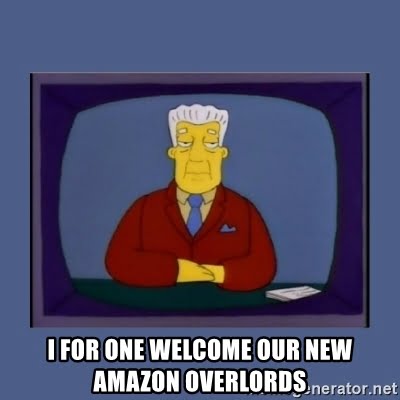Why “Employees Come First” Will Grow Your Organization
I’m in the opinion that employees come first before customers and shareholders.
It’s part of workplace culture manifesto that employees come first.
Of course, plenty of organizations will say that they value their employees, but looking at their track record will show otherwise.
Want this blog in Video form? Here’s our YouTube video on the topic:
Putting employees first can be a bit of a hard sell, but is a long-term investment that if done correctly, is one of the best ways to help your organization grow.
A search on the topic of putting employees first brings up a number of quotes from Richard Branson, founder of Virgin. Here is what he has to say on the topic:
“It sort of should go without saying — and it’s surprising that it still doesn’t go without saying at some companies — if the person who works at your company is 100% proud of the job they’re doing, if you give them the tools to do a good job, they’re proud of the brand, if they were looked after, if they’re treated well, then they’re gonna be smiling, they’re gonna be happy and therefore the customer will have a nice experience.”

An example of putting employees first. Source: Wikimedia Commons
There are many organizations who are doing whatever they can to ensure that they have happy customers. That’s great!
Same thing goes for shareholders. I’m a shareholder of various organizations, so I’m happy when my investments grow in value.
However, there seems to be a growing issue where organizations give so much focus on the shareholders and customers, and sacrifice the employee experience as a result.
They do not take the mindset that employees come first.
In a world where automation can make various forms of employee redundant (we will in the next coming years how it starts to replace jobs), it’s easy to understand why.
Yet, it becomes more important than ever that the employees you do have on board are a good fit for your team, and you treat them well.
I want more organizations to see the value of having the mindset that employees come first.
It’s not a hot take by any stretch, but you’d be surprised how much it flies in the face of how many organizations perform, whether at the enterprise level, or startups.
What This Article Will Cover On Putting Employees First:
(click on the links below to jump to that section)
- Examining Organizations Where Customers Come First.
- Examining Organizations Where Employees Come First.
- What You Can Do To Ensure Your Employees Come First?
1. Examining Organizations Where Customers Come First.
While a cliche example, let’s take a look at Amazon.
Amazon has a well-known reputation for being customer-obsessed.
It’s part of their leadership principles.
During meetings, there is an empty chair to represent the customer.
We all use Amazon to use extent. I sure do.

Source: Meme generator
Seeing how fast they’ve grown, you can’t argue that their customer-obsessed focus has worked for them.
That said, I don’t think anyone will argue that Amazon does not give the same level of care when it comes to being employee-obsessed.
It’s not hard to find countless horror stories of working at Amazon. This is for both the warehouse jobs, and the white-collar positions as well. It’s obvious that they are not putting employees first.
Here are some articles on working in the Amazon warehouses that you can look at:
- AMAZON WORKING CONDITIONS: URINATING IN TRASH CANS, SHAMED TO WORK INJURED, LIST OF EMPLOYEE COMPLAINTS
- Amazon Warehouse Employees’ Message to Jeff Bezos — We Are Not Robots
- Amazon warehouse workers skip bathroom breaks to keep their jobs, says report
I took a sketch comedy class last year where we spent a class writing jokes in the style of SNL Weekend Update. I had one along the lines of the following:
It’s been reported that employees working in Amazon warehouses are peeing in bottles instead of using washrooms for fear of falling behind or losing their jobs. When asked for comment, founder Jeff Bezos said, “If only I can get them to do the same for pooping.”
Also, a note on the “we are not robots” article. You just know Mr. Bezos is chomping at the bit to automate everything. No need to putting employees first if you have robots doing everything for you!

Yes, that’s Jeff piloting a big robot that looks like a more advanced version that Ripley uses at the end of Aliens. No, it’s not a photoshop. Source: Geekwire
Here is an article for working in the white-collar positions:
Inside Amazon: Wrestling Big Ideas in a Bruising Workplace
It’s a long, and in-depth read. Again, very cutthroat.
So, to the point of looking at Amazon, I propose the following:
To grow like they did, was it…
- Because of their cutthroat culture?
- In spite of their cutthroat culture?
What if they were employee obsessed just like they were with customers? What would turnover be like? What would their growth be like? Would they be worth more? Less? Around the same? What would their headcount be like?
Amazon is an example of an organization that promotes the overwork culture that we at Playficient do not agree with (which we have written about here – The Overworked Culture – Let’s Talk).
What would Amazon be like if they were putting employees first?
Honestly, it’s hard to say, but we will later look at cases at organizations where employees come first, and the results of that mindset.
To be clear, Amazon isn’t for everyone. That’s fine. I’ve known people who have thrived there.
For every opening, you have god-knows how many people willing to give up a kidney, their soul and their firstborn for the chance to work there.
Founder Jeff Bezos has made it clear on their approach (which I’ve quoted in the past on an article I wrote about the FAANG effect):
“We never claim that our approach is the right one — just that it’s ours — and over the last two decades, we’ve collected a large group of like-minded people.”
What are some other examples of organizations that put their customers first?
Let’s take a look at Netflix, an organization that falls in the FAANG (Facebook, Amazon, Apple, Netflix, Google) category (and one in which I’ve written about in the past on why you shouldn’t blindly copy what these organizations do).
Netflix is most definitely a customer obsessed organization.

Note that this seems to be a photoshopped tweet, but it rings true.
What about the employee experience at Netflix?
- WORKING AT NETFLIX SOUNDS ABSOLUTELY TERRIFYING
- At Netflix, Radical Transparency and Blunt Firings Unsettle the Ranks
Again, it sounds like a case of the employee experience being sacrificed in the name of the customer experience and shareholders. Netflix, another one of the FAANG companies, is not in the mindset of putting employees first.
Again, to be clear, this may not be the experience that everyone has.
Many have thrived in these organizations. The fact, however, that these result pop up high in Google can be pretty telling, however. Make of it what you will.
Again, like Amazon, I ask the question:
How much better would they be performing (if they would) if they took the mindset of employees come first?
Did they do so well as a result, or in spite of it?
2. Examining Organizations Where Employees Come First.
Now, let’s take a look on the other side of coin. Let’s take a look at organizations where it’s clear in their mandates that employees come first. Despite what conventional wisdom loves to tell us, there is a lot of value in putting employees first, and these organizations are examples of it.
Exhibit A – Southwest Airlines:
Southwest Airlines has always been putting employees first. The results?
- 4 reasons people love working at Southwest, which has never laid off a single employee. In their 45 years, they have never had to cut pay or lay off employees.
- Why Southwest Has Been Profitable 45 Years in a Row. This is an incredible feat, to say the least, especially since they’re in the air travel industry.
Now, to be clear, quoting Warren Buffett:
“Past performance is no guarantee of future results.”
That said, it’s safe to say that Southwest focusing on putting employees first has had a large impact on the organization, and, in turn, the customer experience.
Exhibit B – Costco:
- Costco CEO Finds Pro-Worker Means Profitability Costco has proven time and time again that focusing on their employees have helped them remain profitable.
- Why Culture Makes Costco America’s Best Employer Costco has beaten out organizations like Google to be voted the best place to work in America. Wall Street has been critical in the past about the generous offerings that Costco gives to employees, but Costco has not caved in.
- As of writing, over the last 5 years, Costco stock price has increased about 80%, while Wal-mart stock, a competitor notorious for poor employee experience, has increased only 20%. While not a 1:1 correlation, there is a lot of value in putting employees first.
Exhibit C – Starbucks:
“We built the Starbucks brand first with our people, not with consumers.”
Ceo Howard Schultz
From Brand Autopsy – The Starbucks “Employee First” Philosophy
To treat its workforce well, Starbucks offers all full-time and part-time employees the opportunity to receive full healthcare benefits, stock options/discounted stock purchase plans, and other meaningful benefits. The company’s reputation for being an employer of choice has been recognized countless times. Most recently, in January 2007, Starbucks was ranked as the 16th “Best Company to Work For in America” by Fortune Magazine.
Starbucks stock over the last five years has doubled, while the S&P 500 has increased around 50%.
Now, to be fair, the price of Amazon stock has increased 454% during that time, and Netflix has increased 570%, so make of that what you will.
That said, the examples I’m looking at for highly regarded employee experiences are in more traditional industries, while Amazon and Netflix are in the high-volatile, high-growth tech space.
Exhibit D – Trader Joe’s:
14 Tasty Secrets of Trader Joe’s Employees
“It’s not people who’ve been told they have to act nice. It’s people who genuinely care about how the customer’s feeling.” Caring employees create a supportive, communal environment that’s different than typical grocery stores. “My fellow Crew Members truly were the best,” Royal says. “I’ve always considered myself to be a pretty optimistic gal, but for the most part, I was just a dime dozen at Trader Joe’s.”
As a final exhibit, looking at Whole Foods is pretty interesting, as they were acquired by Amazon.
Whole Foods had an excellent reputation in having the mindset of employees come first. Then, they were bought by Amazon, who don’t hold the same view of putting the employees first. What has happened as a result?
Amazon Vs. Whole Foods: When Cultures Collide
Some excerpts:
Whole Foods, on the other hand, always prided itself on its personal touch, empowering individual stores—even individual employees—to make decisions about products that emphasize high quality, healthy, and local foods. That decentralization, however, caused enormous inefficiencies that drove up prices to the point where critics referred to the store as “Whole Paycheck.”
“A lot of it from our perspective was centered on a culture clash,” says Campbell. “Whole Foods has a very high-empowerment kind of culture, so these ‘draconian’ standards, telling people where to put things on the shelves and the loss of autonomy, employees were feeling angry from that.”
The company also earned loyalty from team members—it was named one of America’s best companies to work for by Fortune magazine a staggering 20 years in a row.
To say that there was a clash between the cultures between Amazon and Whole Foods is an understatement.
3. What You Can Do To Ensure Your Employees Come First At Your Organization?
Before discussing putting employees first, I want to point out that I’ve only looked at a handful of organizations and by no means represents the business world as a whole.
There are plenty of organizations in traditional sectors that sacrifice the employee experience to focus on customers and shareholders. On the other side of the coin, there are numerous organizations in the highly-volatile, high-growth tech space that have the mindset of employees come first.
With that said, how might an organization shift to take the approach of employees come first?
Devoting the level of research and care that you put into the customer experience with your employee experience.
Organizations will spend countless resources to work on customer pain points and creating solutions to their problems, as they should. It’s what brings in the bacon.
Why not do the same process when it comes to your employees? There’s plenty of overlap in discovering pain points and creating solutions.
If so many organizations are making use of design thinking or putting a heavy emphasis on design, why not use it for your employee experience as well?
You don’t need to redesign the wheel.
Focus on your employee onboarding process just as much as you focus on your user onboarding process.
Whether you’re building a mobile app, or a retail shopping experience, how you onboard customers is something that can make or break your product or service.
The same thing goes for your employee experience. A quality onboarding process can be the difference in employees deciding to stay long term, or looking for a new job within six months.
I’ve also gone into detail about ten ideas you can use to improve your employee onboarding process.
You want to be devoting just as much of your time and resources to building a quality employee onboarding process as your user onboarding process.
Something to note about investing on your onboarding process, whether it’s for customers or employees, is that the more you work on it upfront, the less you will have to update it. It’s a long-term investment.
For employees, a quality onboarding process will keep them around longer and reduce turnover.
For customers, a quality onboarding process will keep them coming back to your app, or your store, or whatever your product or service is.
Standing up for your employees.
Organizations will let certain customers walk all over the staff if it ensures that they stay as a customer.
I’m sure we’ve all worked (or currently work at) an organization that does that. I’ve had that experience in the past.
Back in my days as a Product Manager, I worked at an organization that treated us employees very well. Easily the best experience I had, along with a quality onboarding process.
Yet, there was a troublesome customer that we dealt with that were allowed to walk all over us.
Prior to my time at the organization, there were staff that left as a result of dealing with this customer, and for certain employees, they played a noticeable factor in their departures. This was not a high number, mind you, but it was still noticeable.
It’s also funny to note that they were not an overly profitable client.
They took valuable time and effort from employees that could have been better focused elsewhere.
Hindsight being 20/20, we should’ve taken a stand and made things clear with them. It’s not like we only had a handful of customers and were at their mercy. Far from it.
As I pointed out earlier, Costco has gone against the wishes of Wall Street, who have told them to cut down on employee pay or increasing the price of a hot dog, but Costco with their employee comes first mindset have not budged.

Trying to raise hot dog prices is pretty evil, Wall Street. Source: Pixabay
Conclusion.
What we covered:
- Examining Organizations Where Customers Come First.
- Examining Organizations Where Employees Come First.
- What You Can Do To Ensure Your Employees Come First?
I want to be clear that I’m not suggesting it’s one or the other when it comes to the employee experience and your customer experience. The two go hand in hand.
Work on your employee experience, and those employees will be able to better deliver a quality customer experience.
Putting employees first has great value that cannot be overstated.
As I started the article with an excerpt from Richard Branson, I will do the same again.
“It sort of should go without saying — and it’s surprising that it still doesn’t go without saying at some companies — if the person who works at your company is 100% proud of the job they’re doing, if you give them the tools to do a good job, they’re proud of the brand, if they were looked after, if they’re treated well, then they’re gonna be smiling, they’re gonna be happy and therefore the customer will have a nice experience.”
One of the best things that you can do to taking the mindset of “employees come first” is to work on your employee experience design.
I’ve written a post on how to use the design thinking process for that:
A Guide To The Design Thinking Process & The Employee Experience Design
One way to also help put employees first is building out a thorough employee journey map. We’ve written on the subject here:
Another great way to help put employees first is taking advantage of the benefits of play in the workplace.
I’ve written a guide on how to the most out of play at work for your organization:
How To Transform YOUR Organization Through Play At Work
If you need help with working on the employee experience design, Playficient can help you!
One of our core offerings for organizations is working on your employee experience design.
Please contact us for more information.


